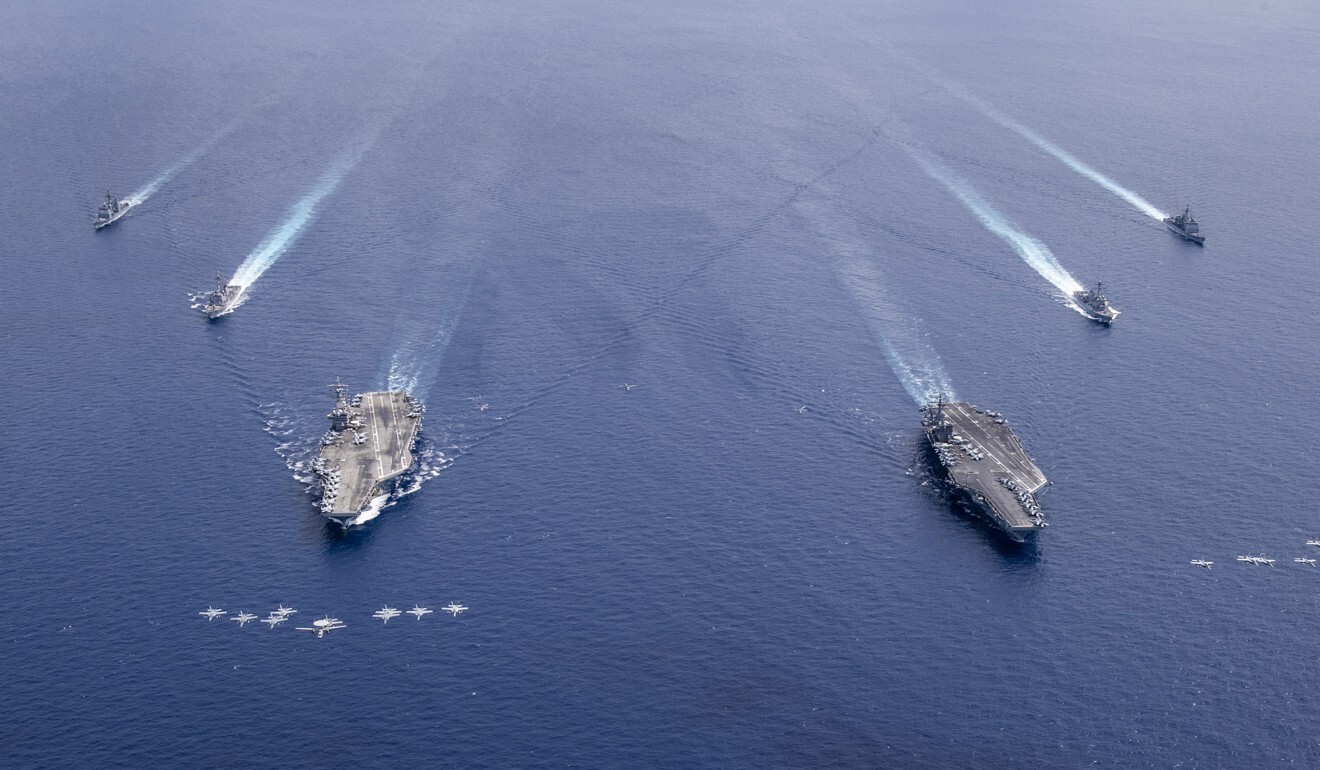
India and US conduct joint military exercises in Indian Ocean
- The military operations come as both India and the US are embroiled in disputes with China
- The US Navy described the drills as designed to ‘provide security throughout the region’
The cooperative exercises involved the Nimitz carrier strike group, one of the world’s most formidable naval formations that consists of the aircraft carrier USS Nimitz, a guided missile cruiser named USS Princeton and the USS Sterett and USS Ralph Johnson, two guided missile destroyers.
The Indian vessels that took part in the exercises were the destroyer INS Rana, two stealth frigates named INS Sahyadri and INS Shivalik and a missile corvette called INS Kamorta.

02:32
Washington’s hardened position on Beijing’s claims in South China Sea heightens US-China tensions
“It was a privilege to operate with the Indian Navy,” Rear Admiral Jim Kirk, commander of the carrier strike group, said in a statement.
The US Navy described the drills as “high-end exercises designed to maximise training and interoperability, including air defence”, adding that the operations were designed to “provide security throughout the region”.
“These engagements also present opportunities to build upon the pre-existing strong relationship between the United States and India and allow both countries to learn from each other,” it said.
According to Indian media, the exercises were conducted in the Bay of Bengal off the coast of the Andaman and Nicobar Islands, a union territory of India. The Nimitz carrier strike group is currently en route towards a deployment to the Gulf.
The Indian Navy published an official tweet showcasing a 20-second video of the joint exercises.
The operations came amid the backdrop of negotiations between Chinese and Indian military representatives over the stand-off at their shared Himalayan border since May. The two countries have said they want to de-escalate tensions that peaked on June 15 when a brutal skirmish left at least 20 Indian soldiers dead after hand-to-hand fighting in the Galwan Valley.
US Secretary of State Mike Pompeo said last week the US would align itself with the 2016 Hague tribunal ruling which invalidated China’s territorial claims in the South China Sea. The US had previously agreed with the decision but had not officially supported it.

Sun Shihai, a researcher at the Chinese Academy of Social Sciences, said both the US and India had China as the target in the exercise.
“The purpose and intention to deter China is quite obvious. It is one of the events in the trend of a closer India-US military cooperation, though a US aircraft carrier strike group does fuel the current nationalistic sensation in India,” he said.
“It cannot be ruled out that India might join the US freedom of navigation operations in the South China Sea. But that would highly depend on how China-India relations develop in the future.”
On the land border, Sun said he did not believe India would fully engage in a military conflict with China as it saw the Chinese as having clear military advantages.
“Beijing should keep calm and restrained and maintain strategic stability with India, because such exercises are just for demonstration, they are not substantial,” he said.


